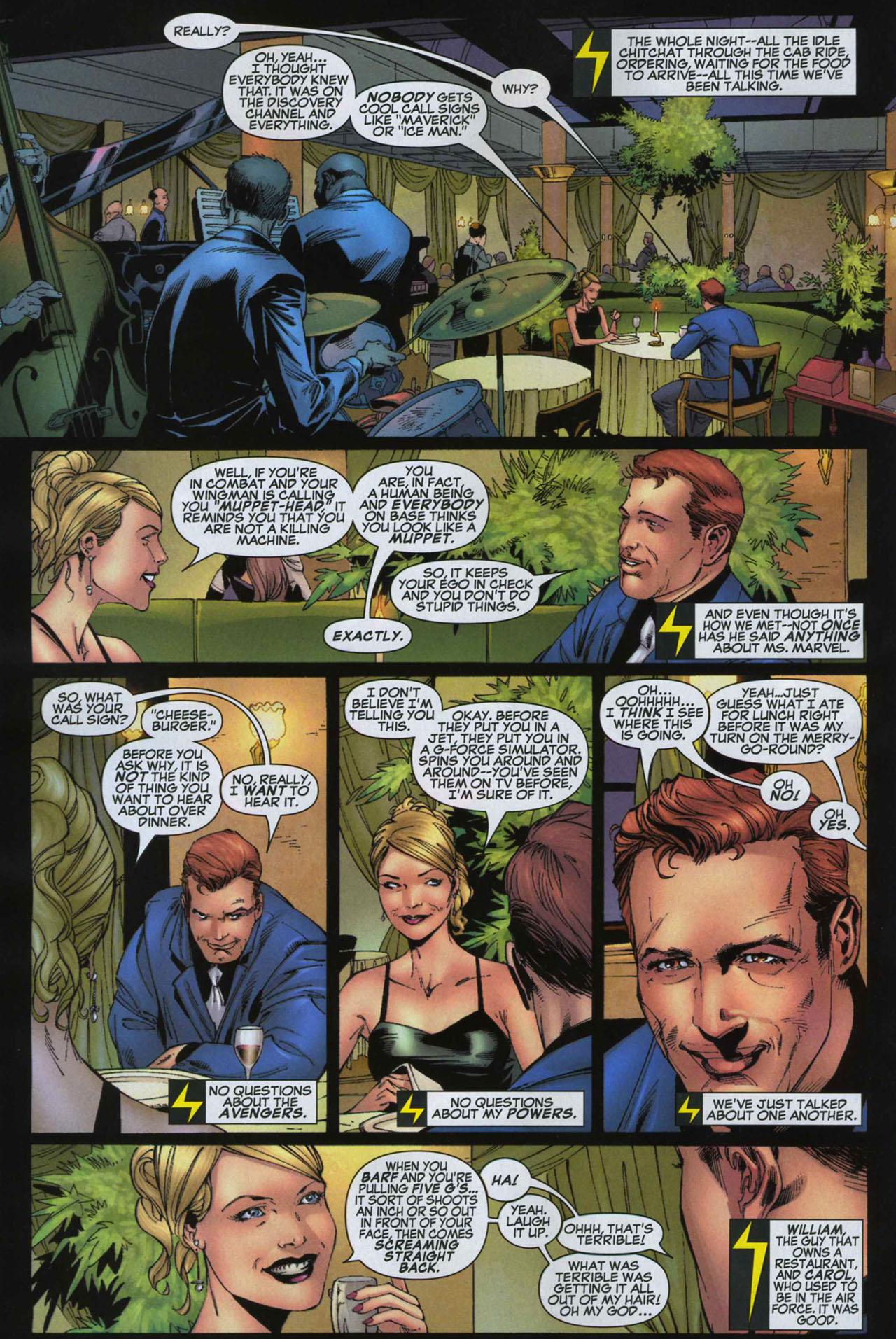Ms. Marvel #11 (2007)
Written by Brian Reed
Artwork by Roberto De La Torre
Inks by Jonathan Sibal, Colors by Chris Sotomayor
Chef’s Note: I should make a unique tag for situations such as this. Here we see Carol and her date settling down to a nice dinner in a classy joint.
But that’s not what we are focused on here – the plates, after all, remain clean. Whatever they may have ordered is not something we will ever know (why? no one knows).
What we DO discover here is Carol’s call sign: cheeseburger
We also discover that Carol apparently enjoys cheeseburgers for lunch, and sacrificed one to make her wings.
High-g training is no joke-
The vestibular system is nature’s way of maintaining balance in a healthy human body. What our eyes are seeing, the inner ear is sensing and the muscles are feeling. But when our sensors go awry, motion sickness ensues. It’s not an illness per se, but a group of symptoms–nausea, vomiting, pallor, cold sweats–best defined as a normal reaction to an abnormal physical situation: your sweaty palms during flight turbulence; the shade of green you turn watching waves from a deck of a moving ship. Even tilting your head on a languid merry-go-round will trigger the false sensation of moving in a direction you are not.
Multiply these physical perceptions tenfold and you have some idea of the stress faced by fighter pilots acclimating to rapid changes in direction at multiple g’s. As aircraft became more powerful and maneuverable over the past century, medical researchers determined that technology had outpaced the constitution of the mammalian body. So in 1964 the air force installed a human centrifuge at what is now Brooks City Air Base in San Antonio. Begun as a pilot-training headquarters, Brooks evolved into a superlab for aerospace medicine. Its centrifuge integrates support equipment to monitor pulmonary activity, blood-gas levels, and cardiovascular reaction to extreme g-forces.
In other words, it’s where fighter pilots and astronauts learn how to avoid puking.
